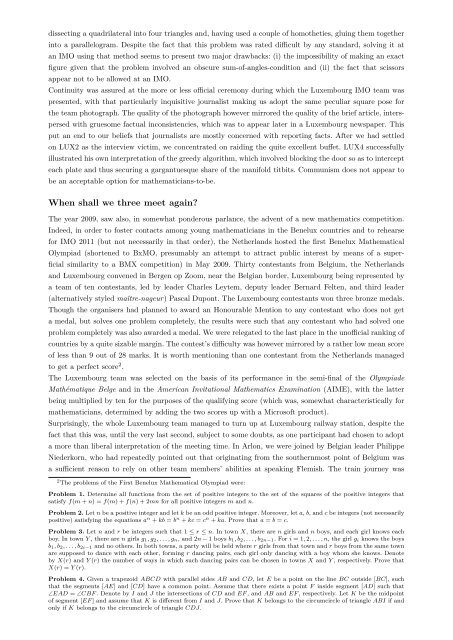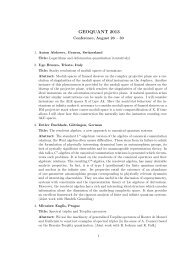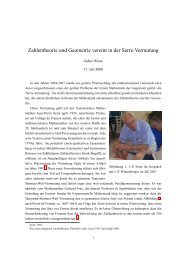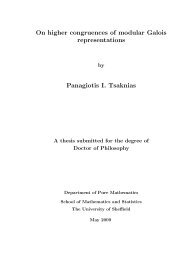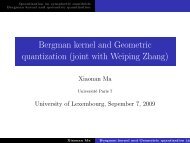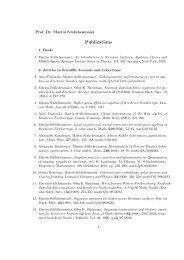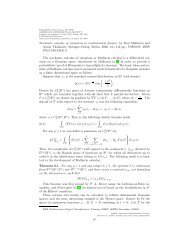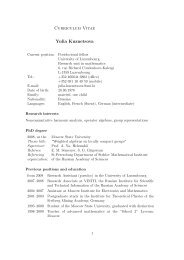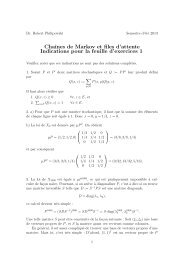THE 50th INTERNATIONAL MATHEMATICAL OLYMPIAD
THE 50th INTERNATIONAL MATHEMATICAL OLYMPIAD
THE 50th INTERNATIONAL MATHEMATICAL OLYMPIAD
Create successful ePaper yourself
Turn your PDF publications into a flip-book with our unique Google optimized e-Paper software.
dissecting a quadrilateral into four triangles and, having used a couple of homotheties, gluing them together<br />
into a parallelogram. Despite the fact that this problem was rated difficult by any standard, solving it at<br />
an IMO using that method seems to present two major drawbacks: (i) the impossibility of making an exact<br />
figure given that the problem involved an obscure sum-of-angles-condition and (ii) the fact that scissors<br />
appear not to be allowed at an IMO.<br />
Continuity was assured at the more or less official ceremony during which the Luxembourg IMO team was<br />
presented, with that particularly inquisitive journalist making us adopt the same peculiar square pose for<br />
the team photograph. The quality of the photograph however mirrored the quality of the brief article, inters-<br />
persed with gruesome factual inconsistencies, which was to appear later in a Luxembourg newspaper. This<br />
put an end to our beliefs that journalists are mostly concerned with reporting facts. After we had settled<br />
on LUX2 as the interview victim, we concentrated on raiding the quite excellent buffet. LUX4 successfully<br />
illustrated his own interpretation of the greedy algorithm, which involved blocking the door so as to intercept<br />
each plate and thus securing a gargantuesque share of the manifold titbits. Communism does not appear to<br />
be an acceptable option for mathematicians-to-be.<br />
When shall we three meet again?<br />
The year 2009, saw also, in somewhat ponderous parlance, the advent of a new mathematics competition.<br />
Indeed, in order to foster contacts among young mathematicians in the Benelux countries and to rehearse<br />
for IMO 2011 (but not necessarily in that order), the Netherlands hosted the first Benelux Mathematical<br />
Olympiad (shortened to BxMO, presumably an attempt to attract public interest by means of a super-<br />
ficial similarity to a BMX competition) in May 2009. Thirty contestants from Belgium, the Netherlands<br />
and Luxembourg convened in Bergen op Zoom, near the Belgian border, Luxembourg being represented by<br />
a team of ten contestants, led by leader Charles Leytem, deputy leader Bernard Felten, and third leader<br />
(alternatively styled maître-nageur) Pascal Dupont. The Luxembourg contestants won three bronze medals.<br />
Though the organisers had planned to award an Honourable Mention to any contestant who does not get<br />
a medal, but solves one problem completely, the results were such that any contestant who had solved one<br />
problem completely was also awarded a medal. We were relegated to the last place in the unofficial ranking of<br />
countries by a quite sizable margin. The contest’s difficulty was however mirrored by a rather low mean score<br />
of less than 9 out of 28 marks. It is worth mentioning than one contestant from the Netherlands managed<br />
to get a perfect score 2 .<br />
The Luxembourg team was selected on the basis of its performance in the semi-final of the Olympiade<br />
Mathématique Belge and in the American Invitational Mathematics Examination (AIME), with the latter<br />
being multiplied by ten for the purposes of the qualifying score (which was, somewhat characteristically for<br />
mathematicians, determined by adding the two scores up with a Microsoft product).<br />
Surprisingly, the whole Luxembourg team managed to turn up at Luxembourg railway station, despite the<br />
fact that this was, until the very last second, subject to some doubts, as one participant had chosen to adopt<br />
a more than liberal interpretation of the meeting time. In Arlon, we were joined by Belgian leader Philippe<br />
Niederkorn, who had repeatedly pointed out that originating from the southernmost point of Belgium was<br />
a sufficient reason to rely on other team members’ abilities at speaking Flemish. The train journey was<br />
2 The problems of the First Benelux Mathematical Olympiad were:<br />
Problem 1. Determine all functions from the set of positive integers to the set of the squares of the positive integers that<br />
satisfy f(m + n) = f(m) + f(n) + 2mn for all positive integers m and n.<br />
Problem 2. Let n be a positive integer and let k be an odd positive integer. Moreover, let a, b, and c be integers (not necessarily<br />
positive) satisfying the equations a n + kb = b n + kc = c n + ka. Prove that a = b = c.<br />
Problem 3. Let n and r be integers such that 1 ≤ r ≤ n. In town X, there are n girls and n boys, and each girl knows each<br />
boy. In town Y , there are n girls g1, g2, . . . , gn, and 2n − 1 boys b1, b2, . . . , b2n−1. For i = 1, 2, . . . , n, the girl gi knows the boys<br />
b1, b2, . . . , b2i−1 and no others. In both towns, a party will be held where r girls from that town and r boys from the same town<br />
are supposed to dance with each other, forming r dancing pairs, each girl only dancing with a boy whom she knows. Denote<br />
by X(r) and Y (r) the number of ways in which such dancing pairs can be chosen in towns X and Y , respectively. Prove that<br />
X(r) = Y (r).<br />
Problem 4. Given a trapezoid ABCD with parallel sides AB and CD, let E be a point on the line BC outside [BC], such<br />
that the segments [AE] and [CD] have a common point. Assume that there exists a point F inside segment [AD] such that<br />
∠EAD = ∠CBF . Denote by I and J the intersections of CD and EF , and AB and EF , respectively. Let K be the midpoint<br />
of segment [EF ] and assume that K is different from I and J. Prove that K belongs to the circumcircle of triangle ABI if and<br />
only if K belongs to the circumcircle of triangle CDJ.


